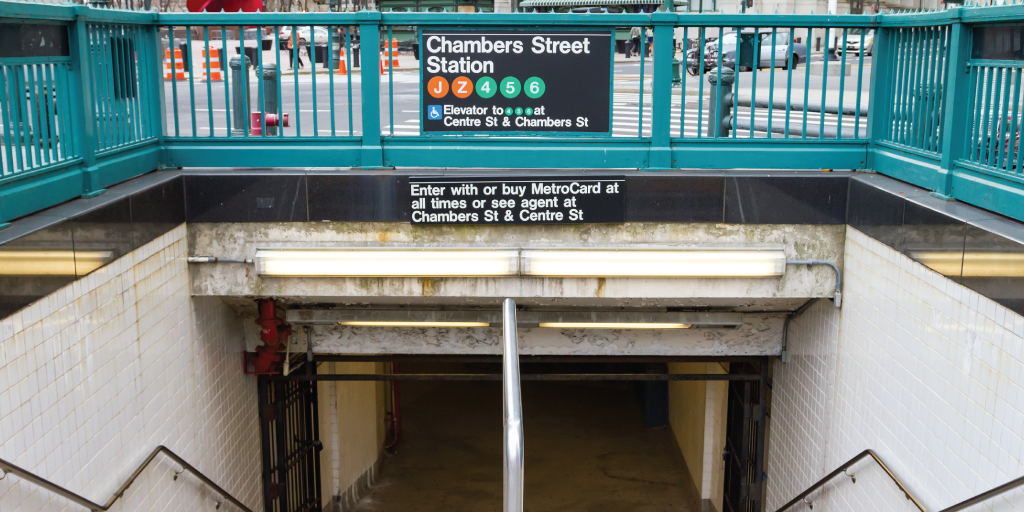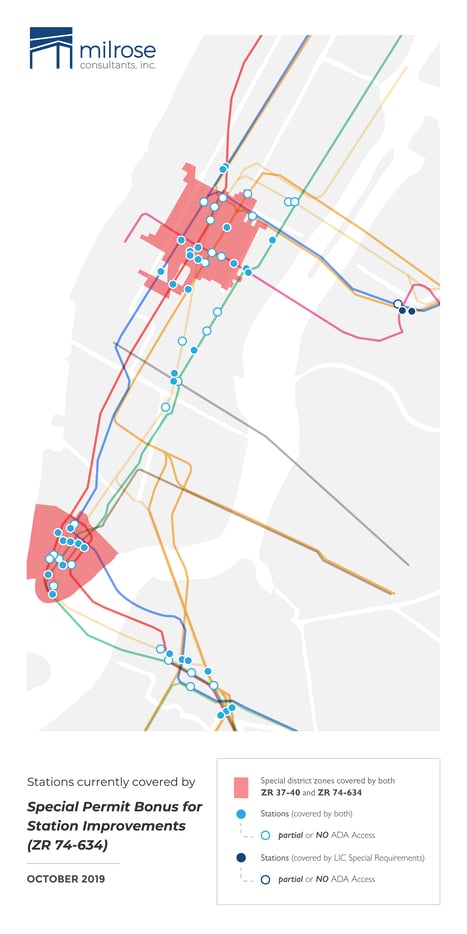The ADA has been in effect since 1990, yet 23% of subways are still not fully accessible. How can zoning changes play a role in increasing accessibility?
The 1990 Americans with Disabilities Act (ADA) was landmark legislation that prohibited discrimination against disabled individuals. Since its passage, NYC has worked to expand access to its subway system for those with a disability. Yet despite some progress the majority of subway stations are not fully ADA accessible, which impacts hundreds of thousands of residents.
Now, the City Council is considering a list of zoning changes that could facilitate ADA compliance of more subway stops by incentivizing private developers.
The state of ADA accessibility in NYC Transit
The ADA requires that "places of public accommodation" — which include public transit stations, as well as schools, government buildings, and banks — remove "architectural barriers" that prohibit or restrict access by disabled individuals when possible. This commonly is rectified by widening doors, building ramps or, in the case of the subway, adding elevators. Yet the practical challenge faced by the Metropolitan Transit Authority and NYC is apparent in the reliance on staircases.
Renovating an aging and immense system to be compliant with the ADA has proven to be difficult. As of 2019, less than a quarter (23%) of subway and Staten Island Railway stations were fully accessible. That translates to just 113 stops among nearly 500. While 1.4% are partially accessible, 4.9% are under construction and 9% were selected for upgrades, 61.6% of stations are not ADA accessible and have no plans or funding for such renovations.
City Council eyes zoning changes
The amount of public funds needed to overhaul the system for ADA accessibility would be prohibitive, which is why the City Council is looking to private development as a means to achieving systemwide accessibility. The crux of the plan, which is in very early stages, is to incentivize participation and renovation through changes to the zoning resolution. While mechanisms and zoning tools exist today, like mandatory improvements or floor area bonuses, the City Council is exploring options for expanding those tools and removing other barriers.
As it stands, current zoning tools include:
Transit Easement Volume Certifications (Special Transit Land Use District Chapter, and Other Sections): Developers along the planned, and semi-operational, Second Avenue subway line need to consult with the MTA and City Planning Commission on easements to facilitate station access improvements. If a transit easement volume is deemed necessary to facilitate access improvements, they may be constructed as part of the new development, or an easement volume is reserved for future construction.
East Midtown: This mechanism was created in 2017 as part of the Midtown East Rezoning. It allows certain qualifying sites to obtain 2.7 to 5.4 of additional floor area ratio (FAR) in exchange for specific transit system improvements for targeted facilities within the district. This mechanism includes an option for financial contributions into a Public Realm Improvement Fund.
|
Above: The few Special District Zones eligible for FAR bonuses in exchange for station improvements under NYC's current zoning are in red. Source: NYC City Council
|
So what role can the Department of City Planning play to facilitate expansion of ADA access through zoning changes? As evidenced, many of the incentives are only available in a select few number of special, high-density commercial districts.
Resolving that exclusivity was one of the four recommendations outlined by the City Council in its report on ADA accessibility and zoning:
1. Require transit easement volume certifications throughout the transit system.
2. Expand and expedite zoning bonuses for station improvements by expanding geographic applicability, expanding eligibility to additional development sites beyond those directly adjacent to stations, and expediting the review process.
3. Consider additional required site-planning in high-density districts.
4. Ensure regular maintenance of elevators and escalators.
Over the coming months, the City Council will work with the DCP, MTA, and other stakeholders to further research and refine these proposals to arrive at final recommendations that can be implemented in the next year. Developers can plan ahead by utilizing Milrose's code and zoning experts to navigate the city's ever-evolving zoning regulations. Let's work together to build a better and more accessible city. Contact us today.
Developers navigating New York City must overcome various code and zoning challenges. Download our white paper "Planning for spatial success: Unpacking the ROI of zoning analysis" to learn how you can perform a zoning analysis to maximize the ROI on your project.









